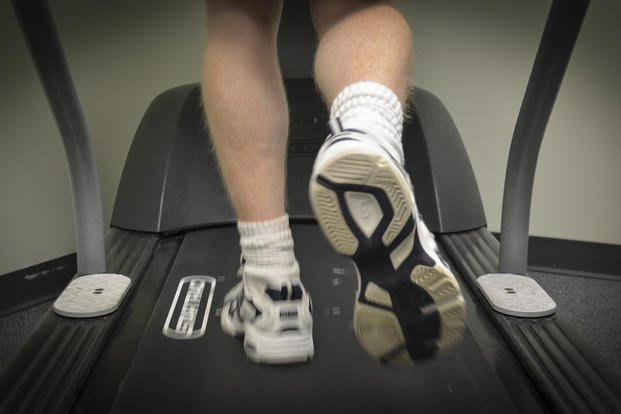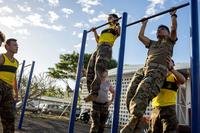When it comes to injury prevention, it is difficult to prove that a particular exercise, stretch or program helped you prevent an injury. Sure, if you have not been injured, you can say all that you did helped you prevent an injury. Or were you just lucky?
Traumatic injury prevention is something that is not easily accomplished, especially if you are involved in heavy contact sports or jumping from airplanes. Other twists and sprains can occur, too. However, proper warmup, mobility/flexibility work and progressive training programs have had a major impact on athletes and tactical professionals during events where overuse injuries can occur. Typically, if you want to avoid injury, you can follow the guidelines below.
1. Overuse: Too Much, Too Soon, Too Often
The is the classic, most common injury that can be prevented. Whether it is too much weight in lifting, too many miles in running, too soon to ruck 50 pounds and doing an activity too often (daily, two-a-days, etc.), this is where people typically see the types of injuries that can be prevented.
Most of the overuse injuries will occur in individual preparation if the goal is to improve quickly before an unrealistic deadline. However, if the preparation before an event such as Ranger training, SEAL training or even a marathon is not enough, the overuse injury could occur during the training or event itself. So there is a fine line between the balance of pushing the right amount to prepare yourself for any physical goal and either overdoing or underdoing it. If you need a guide as to where that line is, do not look at the minimum standards for entry into these programs or events. Work toward the competitive standards. Ask a few people ahead in your journey what their scores and weekly distances were before starting the program or event.
2. Stretching, Flexibility, Mobility
It is absolutely smarter to have a program of stretching and mobility built into your training program, regardless of the goal (athletic or military). Many hamstring pulls, Achilles' tendon tears and joint tendinitis can be limited or prevented with a smart warmup before working out or playing a game. Start off with easy runs or bikes to get the blood flowing. Start moving the body in the form of dynamic stretches and gradually move into the specific events you are training (sprint, lifts, calisthenics, swims, rucks, etc.). Then after the training is done, add in some static stretching of the joints most used. Top the training day off with some foam rolling and massage tools to enhance the response from the total warmup, dynamic stretch, specific movements, cooldown and static stretch process.
3. Cross Train and Periodization
Mixing the training schedule so you have a more balanced program also will help you prevent injuries for the long term. Cross training simply means adding in another form of activity to break up the monotony and strains on muscles and joints. For instance, instead of running every day, try running every other day and add a bike, elliptical, swim or rowing workout on the days in between. This enables you to work the heart and lungs without the impact of daily running. This is a great plan if you are new to running and want to avoid a typical repetitive injury (shin splints, tendinitis, stress fracture).
Cross training allows for the athlete to vary the training through smart programming and therefore helps to prevent overuse injuries. Periodization is more of the long-term approach to cross training. Consider it a fitness budget. Each six- to 12-week cycle can focus on a different element of fitness or activity, therefore not pushing the envelope on a certain type of training for too long. Many injuries come from doing the same event or workout week after week, month after month, year after year, until there is very little improvement and things start to break down -- especially if you are pushing for special ops-level activities.
4. Know Your Body: Trial and Error
If you are used to training, you likely have a few areas that ache from a lifetime or a few years of training (bad back, sore knees, previous injury, etc.). Learn to work around some of the injuries and listen to your body. This may require warming up a little longer. Using a bike instead of running or making sure you do not skip the end-of-the-day static stretch can help.
Having a good understanding of how you hurt yourself in the first place can help prevent future aches and pains in training. Obviously, if you are not used to training and just beginning, the number one rule is go up to number 1 of this article -- avoid doing too much, too soon.
It is best to treat yourself like a beginner, not join a friend who has been running for years, for your first workout. Same in the weight room or any other activity. Pace yourself and warm up properly.
5. Get the Right Gear
If you are a runner or attempting to run, make sure your shoes fit, are relatively new and built for running. For whatever sport or activity you try, footwear is critical to helping you prevent injuries. Also, any other protective gear can help you with previous injuries.
Gear like knee braces, ankle wraps or taping soft areas can help with some of the wear-and-tear of your chosen activity. Also consider compression garments and icing joints and muscles after exercise to help with inflammation, which may affect the following workout if not dealt with immediately after today’s training.
Proving you prevented an injury can be rather difficult. However, you cannot argue with results. If you are doing a program and not seeing any injuries, yet still seeing progress and feeling good each day, keep doing what you are doing. It is working for you.
However, there are general rules that must be followed, because you may not feel like you are overtraining a muscle group or running too much. Only time will tell. It may take several weeks before you see negative performance results or pains in the muscles, joints and even bones. Follow the rules above, and statistically speaking, you will be less likely to injure yourself.
Stew Smith is a former Navy SEAL and fitness author certified as a Strength and Conditioning Specialist (CSCS) with the National Strength and Conditioning Association. Visit his Fitness eBook store if you’re looking to start a workout program to create a healthy lifestyle. Send your fitness questions to stew@stewsmith.com.
Want to Learn More About Military Life?
Whether you're thinking of joining the military, looking for fitness and basic training tips, or keeping up with military life and benefits, Military.com has you covered. Subscribe to Military.com to have military news, updates and resources delivered directly to your inbox.



















